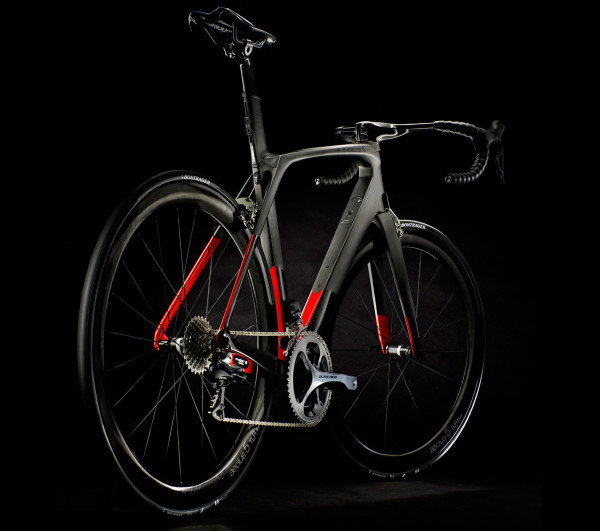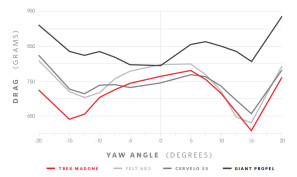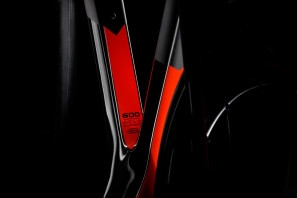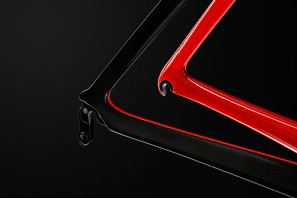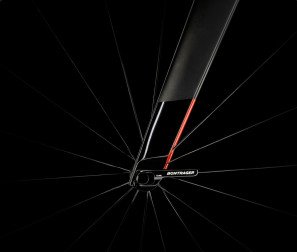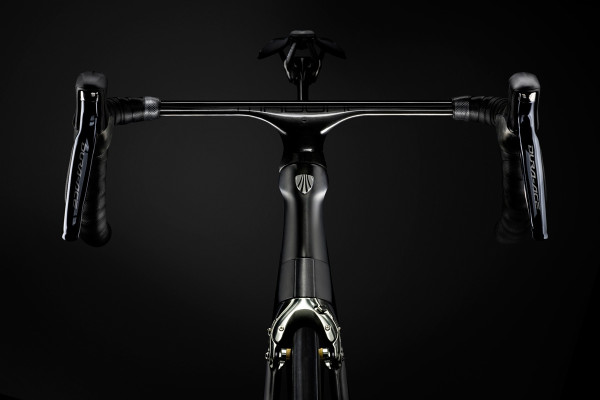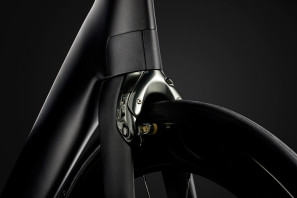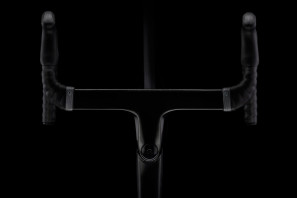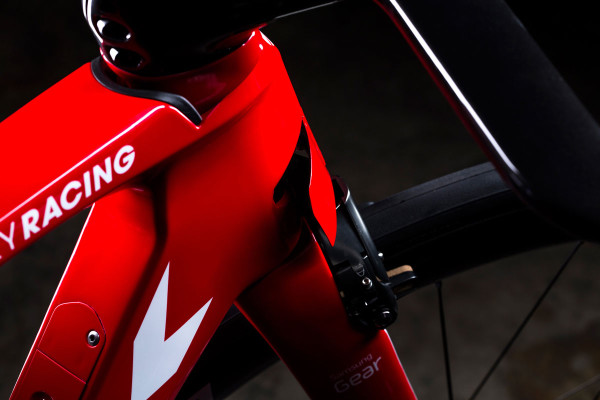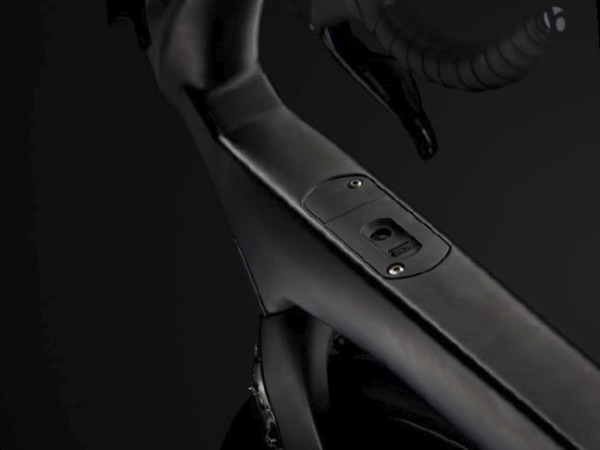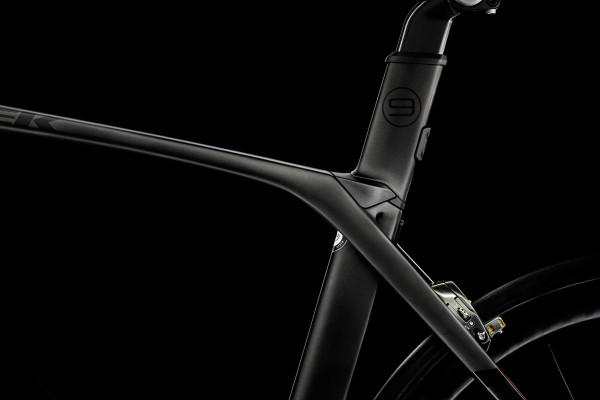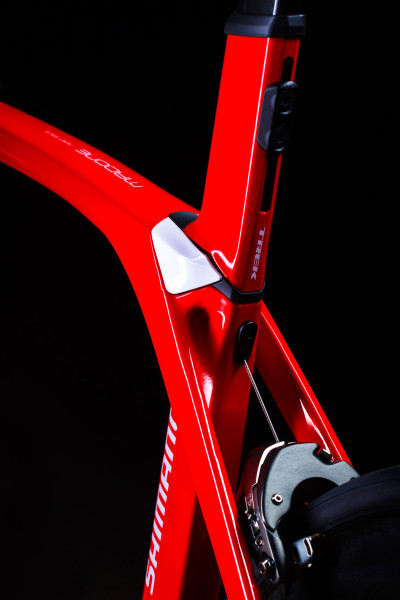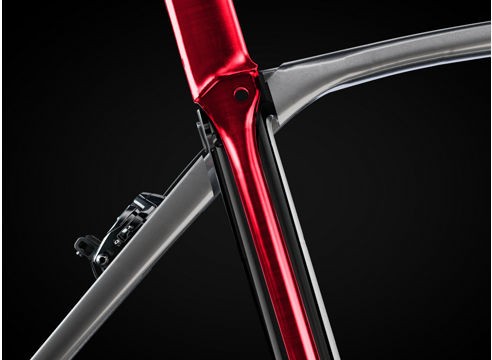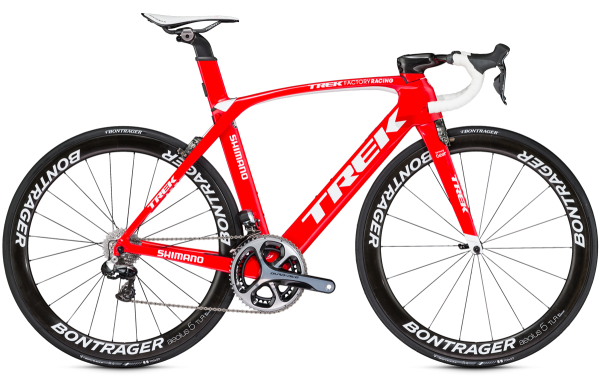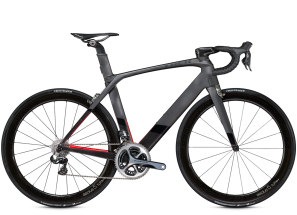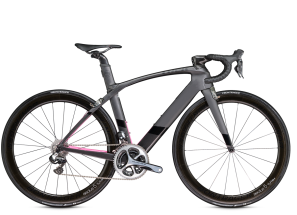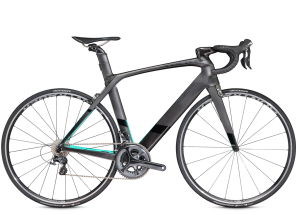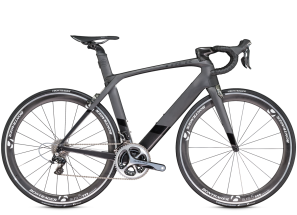Right off the bat, Trek is calling their new Madone the “ultimate race bike.” That’s a big claim for sure, but one that Trek doesn’t take lightly. We’ve seen a number of new aero bikes flood the market recently, but for the Madone Aero is only part of the story. In order to be the Ultimate race bike, it needs to be comfortable for the long haul. It also needs to work with all of the latest component systems in a way that is both user friendly and aerodynamically efficient. There is a lot of hype surrounding the new Madone, but does it live up to it’s billing as the Ultimate Race Bike? You be the judge after the break…
Starting with their signature OCLV carbon fiber, the Madone frame makes use of the latest Kammtail Virtual Foil tube shapes to make it the most aerodynamic Madone yet. Essentially tricking the wind into thinking it’s a full aerodynamic profile, KVF tube shapes are becoming fairly common in bicycle design as they allow for a very stiff, yet aerodynamic frame. According to the Madone White paper (which you can read below) the new Madone is among the fastest of the aero bikes tested, especially at high yaw angles. To make the bike as fast as possible aero touches extend down to the dropouts with molded carbon hoods over the quick releases.
Even though the Madone isn’t quite as slippery as the Cervelo S5 at 0 degree yaw, the relatively low drag numbers at the front of the bike can be attributed to the KVF fork as well as the new aero cockpit and integrated front brake. Using a one piece bar/stem combo which seems to be par for the course with aero bikes lately, the Madone is able to hide all of the cabling, electronics, etc in an aerodynamic package that integrates with the frame. The completely invisible cable routing continues down to the direct mount brakes which hide the cable assembly with articulating Vector Wings. We can’t speak for how easy it is to service, but it certainly looks clean. Continuing with the integration theme, the bar/stem is Blendr compatible for clean mounting of computer head units.
The cable system continues with the Control Center located at the front end of the down tube. When running mechanical drivetrains the Control Center houses barrel adjusters, but when running electronic drivetrains this is where the battery will be stashed into the down tube.
While we expected the new Madone to include an impressive aero package, the inclusion of an IsoSpeed Decoupler is a bit of a surprise. Called Madone IsoSpeed, the system differs from previous iterations of the design using a tube-in-tube construction. The ideas is that this allows the inner tube to flex independently of the outer aero shell so as not to upset the aerodynamics. Going by the numbers provided by trek, the result is a frame that is 57.5% more compliant than its (unnamed) nearest competitor. Having ridden Trek’s IsoSpeed design on other bikes, this isn’t that hard to believe.
The back of the seat tube also houses two new addition to the frame – the Micro Adjust seat mast, and centerpull rear brake. Now with a male seat mast cap that slides into the female seat tube, the seat post height is adjusted with a two bolt slider mounted on the outside of the seat tube. while the seat mast retains the single bolt from the side to clamp to the saddle rails, the pitch of the saddle is now adjusted with a secondary clamping bolt located at the back of the post head. The separate fore/aft and tilt adjustments should still be easy to use but won’t allow the saddle to slip under big hits.
Keeping with the invisible cable system, the rear brake uses a centerpull design with the brake cable popping out of back of the seat tube. Again, no word on how user friendly the cabling system will be, but if aero is your goal the Madone seems to deliver.
To be sold in Trek’s most aggressive H1 fit as well as H2 which will better fit most of the average Joes, Trek is also offering a WSD Madone from the top level 9.9. There will also be a Race Shop limited build in a frameset, and H1 and H2 fit if a bright red pro level build is right up your alley. Of course the Madone will be available through Project One as well so you can tune your bike to your liking before it ever ships. All of the new technology will be available on the Madone 9 series frames and 9.2 and up complete builds, while the Madone 2 through 7 series will continue with the previous designs. Pricing starts at $4,729.99 for the 9 series H2 frameset, and $6,299.99 for the complete Madone 9.2 up to the top shelf Race Shop limited build at $13,649.99.
